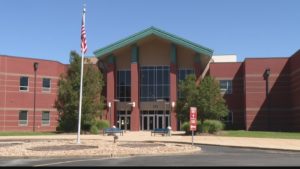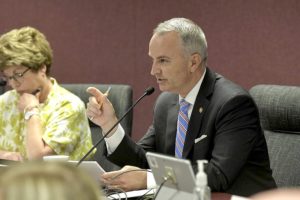Missouri school choice program quietly swells in second year, but has lots of room for growth
Participation in Missouri’s school choice program has ballooned nearly 10% since its inaugural year – but parents and patrons need to know there’s still plenty of room for them to jump…

Participation in Missouri’s school choice program has ballooned nearly 10% since its inaugural year – but parents and patrons need to know there’s still plenty of room for them to jump in.
While 1,361 “MOScholars” scholarships were awarded in the program’s first year, already this year 1,487 scholarships have been awarded – and the current cycle continues through the end of January 2024, so that total will only grow.
And that’s for a program that’s in its infancy, is limited in geography, and doesn’t have much marketing money behind it.
State Treasurer Vivek Malek has been beating the bushes to tell parents about MOScholars – especially in the five counties and larger cities where students are eligible for it. His office has put out public service announcements on TV and radio and digitally, and Malek has been speaking about it wherever he can.
Meanwhile, since the program is fueled by voluntary tax credits that simply redirect up to 50% of your existing state income tax liability to the scholarships, Malek has been spreading the word to businesses and individuals encouraging them to do just that.
His office wrote in a Nov. 1 press release that Malek “is deeply passionate about education and school choice.”
“Education has been the key for me to pull me where I am today,” Malek explained in an interview with The Lion. “And I think for anybody who wants to do good in life, education is the key.”
The MOScholars program offers current scholarships of $6,375 per eligible student for tuition at qualified schools, as well as for textbooks, tutoring and other services and equipment.
Who’s eligible?
Scholarships are available to elementary or secondary school students with an approved Individualized education plan, or those whose family income does not exceed 200% of the federal poverty level, and who also reside in either St. Louis County, Jackson County, St. Charles County, Jefferson County or Clay County, or in cities anywhere in the state that surpass 30,000 in population.
Participation in MOScholars is limited to some $27 million in scholarships this year, an increase from the first-year cap of about $25 million. Once demand for the scholarships reaches the cap amount, participation by income will be limited to those earning up to 100% of the federal poverty level.
But until then, there’s a lot of cap space, with MOScholars having only given out over $9 million in the first year. That left a potential $16 million in tax credits on the table that could have been used to send students to qualified public or private schools of their choice.
In short, the state’s limited school choice program has yet to reach its limits.
To do that, it’s essential that taxpayers sign up to redirect up to 50% of their state income taxes – and that eligible families apply for the scholarships through half a dozen nonprofit Educational Assistance Organizations (EAOs) that screen and award recipients.
Why has the school choice program grown so much already?
“I believe the word is getting out,” Malek says. “People are looking at it, and it is getting the traction that it needs.” Noting that many first-year scholarship recipients have re-upped this year, he adds, “I think that sends a strong message of how good the program is, that they have not fallen off after utilizing it for the first year.”
Indeed, the Herzog Tomorrow Foundation based in Smithville – one of the six EAOs handling the scholarships – reported “over an 83% renewal rate for year two by our current families.”
Even as Malek works to help the program reach its full potential, he wants to see it expanded in order to help Missouri’s children reach theirs.
“My goal is that hopefully we can make some amendments to the current statute so that every child in Missouri gets this opportunity,” he tells The Lion. “I would like it to be across the board in the whole state of Missouri [so] every child has the opportunity to go to a school of their choice and achieve their God-given potential.
“Hopefully the goal would be to get the state appropriations for it eventually and make it a regular school choice program, rather than just donation-based funding.
“We need to make this program strong so that we can showcase to the Legislature that there is a strong demand so that we can move in that direction. So, I’m reaching out to all big companies and corporations in Missouri and high-net-worth people, telling them what the program does and how good it is for our kids and schools.”
Eventually, Malek tells businesses, the results will show up in a more educated and energized workforce.
Moreover, the MOScholars program doesn’t take anything from public schools: The tax credits that fund MOScholars merely funnel more general tax dollars to education.
In this case, to education freedom.
Malek would ask the Legislature to eliminate the geographic restrictions on the scholarships – and to allow unused tax credit space from one year to roll over to the next, letting the program grow organically.
“First, we need to remove these geographic boundaries,” he says. “This program needs to be available to every kid across Missouri, from St. Louis to Sikeston, from Ladue to Laddonia, irrespective of the geographic confines. It needs to be available to everybody.”
And, perhaps most importantly, eligible families need to know about their newfound education freedom.



